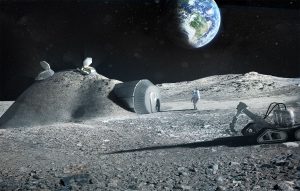
20 interesting facts about Titan
- 👁️ 1153
Titan is the largest moon of Saturn and one of the most intriguing objects in our solar system. With its dense atmosphere, organic compounds, and possible subsurface ocean, Titan has captured the imagination of scientists and the public alike. In this article, we will explore some of the most interesting and important facts about Titan.
Facts about Titan:
- Titan is the largest moon of Saturn and the second-largest moon in the solar system, after Ganymede of Jupiter.
- Titan was discovered in 1655 by the Dutch astronomer Christiaan Huygens.
- Titan has a thick atmosphere, making it the only moon in the solar system known to have a substantial atmosphere.
- The atmosphere of Titan is primarily nitrogen, with small amounts of methane and other organic compounds.
- Titan’s atmosphere is thought to be similar to the early Earth, providing valuable insights into the formation and evolution of our own planet.
- The surface of Titan is covered in a layer of organic material, including frozen lakes and seas of liquid methane and ethane.
- Titan’s surface also features vast sand dunes, towering ice cliffs, and numerous impact craters.
- The average temperature on Titan is about -290°F (-179°C), making it one of the coldest places in the solar system.
- Scientists believe that Titan may have a subsurface ocean of liquid water, which could potentially be a habitat for life.
- The Cassini-Huygens spacecraft was the first to fly by Titan and gather images and data from its surface and atmosphere.
- Titan is of significant scientific interest, as it may provide valuable insights into the origin of life and the evolution of planetary atmospheres.
- Titan is also thought to contain valuable resources, including hydrocarbons, which could be useful for future human exploration and colonization.
- Titan is larger than the planets Mercury and Pluto, and its diameter is nearly 50% greater than that of the Moon.
- Titan’s thick atmosphere traps heat and maintains a warm temperature at its surface, due to a strong greenhouse effect.
- Evidence of active geological processes and the presence of cryovolcanoes suggest the possibility of a subsurface ocean on Titan.
- The lakes and seas on Titan’s surface are composed of liquid methane and ethane, and are thought to exchange chemicals with the moon’s atmosphere.
- Titan’s atmosphere contains a layer of organic smog, thought to be a source of its abundant methane.
- Titan has a relatively slow rotation, taking approximately 16 Earth days to complete one rotation on its axis.
- The surface of Titan is shaped by a variety of geological processes, including erosion, tectonic activity, and impact cratering.
- The lakes and seas on Titan’s surface are thought to be relatively young, geologically speaking, and may still be evolving.
Conclusion: In conclusion, Titan is a remarkable and mysterious moon, with a rich history and scientific significance. Its thick atmosphere, organic compounds, and possible subsurface ocean make it a prime target for further exploration and study. Through continued research and analysis of Titan, we can gain a deeper understanding of our solar system, the potential for life elsewhere, and the formation and evolution of planetary atmospheres.











